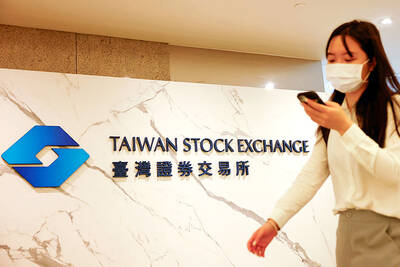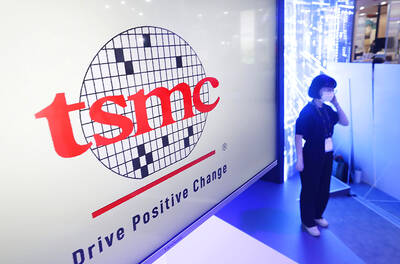The nation’s GDP expanded 2.03 percent last quarter from a year earlier, slightly slower than estimates last month of 2.06 percent, as domestic demand single-handedly supported a mild recovery, the Directorate-General of Budget, Accounting and Statistics (DGBAS) said yesterday.
The agency raised its forecast for GDP growth to 1.35 percent for the whole of this year, an increase of 0.13 percentage points from its prediction in August, after exports fared better than expected.
“The recovery gained traction each quarter and the pace is expected to accelerate for the rest of the year,” DGBAS Minister Chu Tzer-ming (朱澤民) told a media briefing.
The 2.03 percent pickup is the fastest in six quarters after the nation’s export-focused economy emerged from three consecutive quarters of decline in the April-to-June period, the DGBAS’ quarterly report showed.
Exports, which accounted for 75 percent of GDP growth, are forecast to increase 7.17 percent this quarter, aided by solid demand for electronics components, particularly semiconductors, the report said.
Aggressive imports of capital equipment by local semiconductor firms reflect capacity expansion needs and a rosy business outlook, Chu said, referring to spending by Taiwan Semiconductor Manufacturing Co (台積電), the world’s largest contract chipmaker.
Private investment increased 8.1 percent last quarter, much faster than a 1.28 percent forecast, Chu said.
The trend, coupled with government efforts to ramp up innovative industries, will lend further support to private investment and the overall economy, with GDP growth expected to reach 1.87 percent next year, Chu said.
The projection represented a marginal slowdown from 1.88 percent the agency predicted in August, which Chu attributed entirely to a higher base expected for this year.
The DGBAS said that US president-elect Donald Trump’s win at the polls has created uncertainty for Taiwan’s economy if the real-estate tycoon realizes campaign pledges to raise trade barriers.
“Taiwanese manufacturers might suffer if Trump makes Apple Inc and other firms move production lines back to the US, as many local firms supply components for its products,” Chu said.
Generally speaking, when GDP in the US gains 1 percentage point, Taiwan’s economy grows by 0.07 percentage points, Chu said.
The correlation between Taiwan and China is stronger, as Chinese tourists alone generated NT$250 billion (US$7.83 billion at the current exchange rate) in tourism revenue, or 1.5 percent of GDP, last year, Chu said.
The government has sought to offset revenue loss from declining Chinese tourism numbers by wooing travelers from other countries and has made some headway, he said.
Protectionism would surely constrain global trade and the DGBAS will offer assessments when updating growth figures in February after Trump assumes office in January, he added.
GDP growth might rise 2.37 percent this quarter, boosted by the high-sales season for consumer electronics, the report said.

ADVANCED: Previously, Taiwanese chip companies were restricted from building overseas fabs with technology less than two generations behind domestic factories Taiwan Semiconductor Manufacturing Co (TSMC, 台積電), a major chip supplier to Nvidia Corp, would no longer be restricted from investing in next-generation 2-nanometer chip production in the US, the Ministry of Economic Affairs said yesterday. However, the ministry added that the world’s biggest contract chipmaker would not be making any reckless decisions, given the weight of its up to US$30 billion investment. To safeguard Taiwan’s chip technology advantages, the government has barred local chipmakers from making chips using more advanced technologies at their overseas factories, in China particularly. Chipmakers were previously only allowed to produce chips using less advanced technologies, specifically

BRAVE NEW WORLD: Nvidia believes that AI would fuel a new industrial revolution and would ‘do whatever we can’ to guide US AI policy, CEO Jensen Huang said Nvidia Corp cofounder and chief executive officer Jensen Huang (黃仁勳) on Tuesday said he is ready to meet US president-elect Donald Trump and offer his help to the incoming administration. “I’d be delighted to go see him and congratulate him, and do whatever we can to make this administration succeed,” Huang said in an interview with Bloomberg Television, adding that he has not been invited to visit Trump’s home base at Mar-a-Lago in Florida yet. As head of the world’s most valuable chipmaker, Huang has an opportunity to help steer the administration’s artificial intelligence (AI) policy at a moment of rapid change.

TARIFF SURGE: The strong performance could be attributed to the growing artificial intelligence device market and mass orders ahead of potential US tariffs, analysts said The combined revenue of companies listed on the Taiwan Stock Exchange and the Taipei Exchange for the whole of last year totaled NT$44.66 trillion (US$1.35 trillion), up 12.8 percent year-on-year and hit a record high, data compiled by investment consulting firm CMoney showed on Saturday. The result came after listed firms reported a 23.92 percent annual increase in combined revenue for last month at NT$4.1 trillion, the second-highest for the month of December on record, and posted a 15.63 percent rise in combined revenue for the December quarter at NT$12.25 billion, the highest quarterly figure ever, the data showed. Analysts attributed the

Taiwan Semiconductor Manufacturing Co’s (TSMC, 台積電) quarterly sales topped estimates, reinforcing investor hopes that the torrid pace of artificial intelligence (AI) hardware spending would extend into this year. The go-to chipmaker for Nvidia Corp and Apple Inc reported a 39 percent rise in December-quarter revenue to NT$868.5 billion (US$26.35 billion), based on calculations from monthly disclosures. That compared with an average estimate of NT$854.7 billion. The strong showing from Taiwan’s largest company bolsters expectations that big tech companies from Alphabet Inc to Microsoft Corp would continue to build and upgrade datacenters at a rapid clip to propel AI development. Growth accelerated for